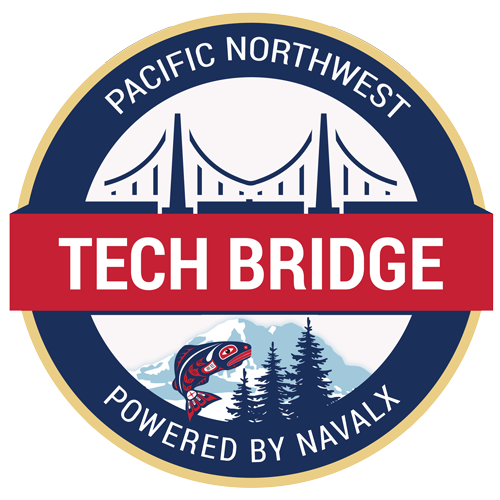Developed by Kitsap Economic Development Alliance (KEDA), WAV-C (which stands for Washington Autonomous Vehicle Cluster) is an economic cluster that aggregates knowledge, competencies and unique resources from government agencies, corporations, entrepreneurs, academic institutions, and funders to accelerate innovation in maritime autonomy. “We explore possibilities in working together to advance the economy and develop novel solutions in the maritime arena,” WAV-C Program Manager Seth Abelson says in a recent interview with NW Tech Bridge.
What is WAV-C, its background, goals, history etc.?
As a cluster, WAV-C currently focuses on autonomous underwater vehicles. We are new in the space – there are eight other clusters under the ICAP program managed by WA state commerce department- and our efforts are concentrated around creating new technologies in three classifications of autonomous and unmanned underwater vehicles: unmanned underwater vehicles (UUV), autonomous underwater vehicles (AUV), and remote operated vehicles (ROM), which are tethered to a cable and remotely controlled. “Our role is to work closely with the five groups I mentioned earlier, identify issues, work with our members and other collaboration partners to offer solutions. As we also seek to accelerate innovation, we are charged with developing pathways to workforce enhancement to meet tomorrow’s technologies. “For example, if there’s a government RFP on the street to build the next underwater vehicle, it will be nearly impossible for a small fabrication company to go it alone. Our role is to create a collaborative environment by recruiting into WAV-C membership companies whose skills and comparative advantage betters the lot for the group. That’s the role of a cluster.
Do you work with other clusters in different regions across the U.S.?
“Yes. We all know each other, and have entered collaborative agreements,” says Abelson. “We want to grow the Pacific Northwest’s economic potential to become the premier destination for all things marine autonomy. We talk and compare notes, but different clusters do different things. Maritime Blue is the closest cluster to our own.” In addition to accelerating innovation, Abelson and WAV-C have three other distinct missions they keep in mind as they move forward. One is to develop pathways to workforce development for future generations by working with universities, colleges, and high school CTE. Next is to find a way to bring in investors to support our local companies. And, finally, to build a coalition above and beyond our country’s borders.
What do you think is one of the biggest challenges that small businesses face when trying to work with the government?
“The biggest challenge for small businesses is always contracts and red tape,” Abelson explains. This is because prime contractors have their own network. “They’re very big and they’ve developed their own ecosystem of subcontractors. Another challenge for small companies is the grant process. “If you’re a small business in Kitsap County, for example, and want to apply for a SBIR, it’s a very involved process and you may not have the bandwidth to finish it. It’s very complex.” Small businesses have a better chance of being seen and heard when they are attached to a cluster like WAV-C.
What is WAV-C’s connection with NW Tech Bridge?
“One of WAV-C’s objectives is to build solutions and enhance economic opportunities locally,” says Abelson. “Our relationship with NW Tech Bridge is a collaborative one. As we meet organizations around the region and identify one that has technology and or skills that may benefit the Navy, we connect such companies with NW TechBridge. They do the same for us when they identify a potential member whose product fits our focus areas. WAV-C considers NW TechBridge one of its key partners.”
What are you most passionate about?
“I’ve always been absolutely passionate about new technologies, developing solutions, debunking solutions, solving problems, and ideating innovation. Since I came to WAV-C, I wake up every morning feeling like the luckiest person in the world. I work in the future of marine technology, automation, and I am a living witness to software systems that will change the way we interact with vehicles. Autonomous systems are it. Ready or not, they are coming. Marine autonomy, mass transit autonomy or aeronautical, the convergence is fast happening. That is exciting.”
What else would you like our readers to know? What do you think they will find valuable?
According to Abelson, the value of joining the WAV-C cluster is threefold. First, there’s a capacity you gain when you join that you wouldn’t have as a lone company. The second is longevity; you have more chances to succeed in the long term. “We open doors for you,” says Abelson. The third reason is how clusters improve the local economy. “Most small businesses are part of a cluster without even realizing it.” This is because, Abelson explains, in a neighborhood, if there is only one store, people will usually go elsewhere to buy things and that store will fail. “But when there are ten different stores in a community, each doing something different, selling different things, then they all survive together. That’s how a cluster works. You support each other as part of a collective. We all rise together.”
For more information about WAV-C, visit wav-c.com or contact Seth Abelson at [email protected].
